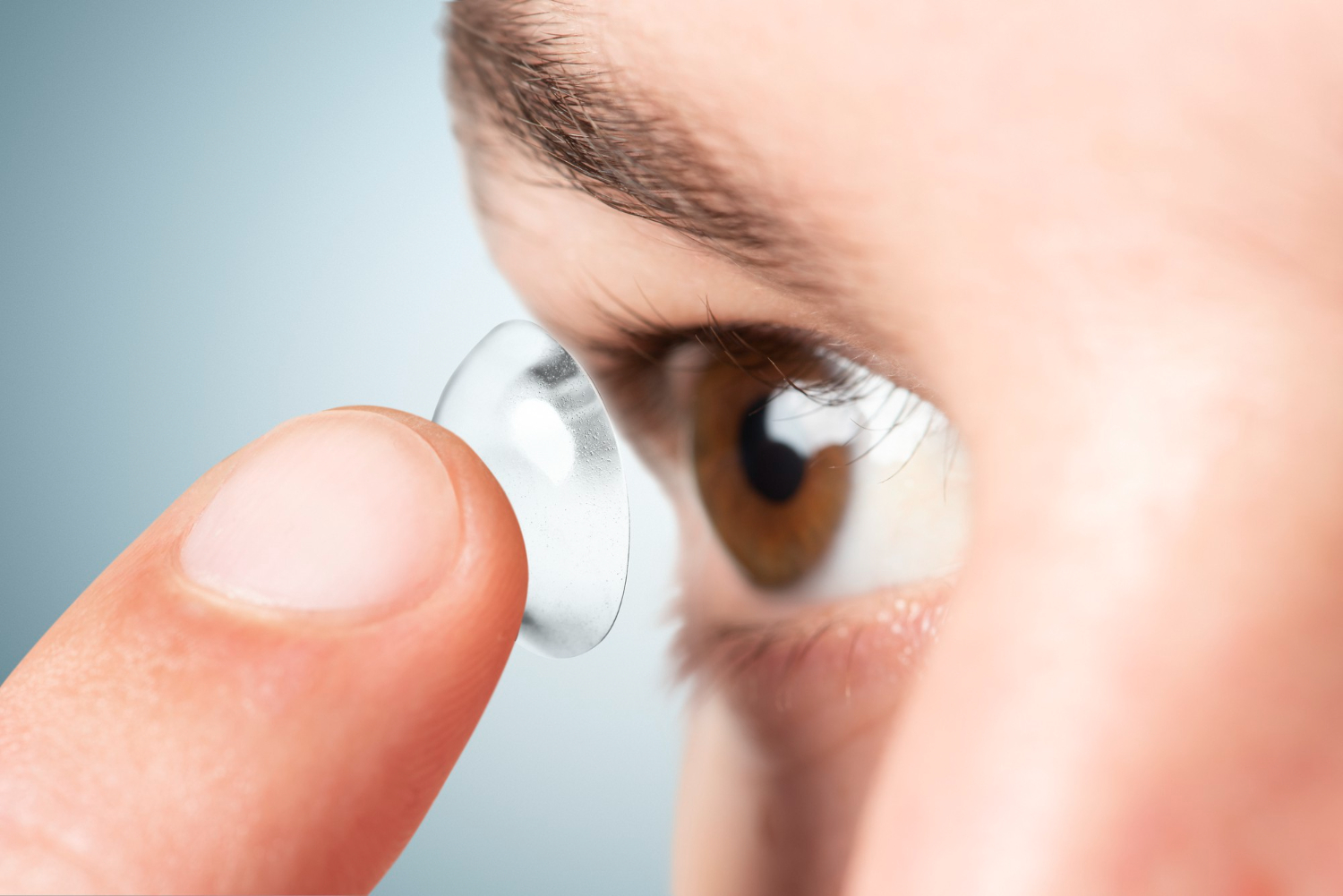Researchers at the Nanyang Technological University (NTU), Singapore, have developed a versatile battery that uses saline solution with glucose as a power source. The battery is as thin as the human cornea. In the future, this micrometre-thin battery could power smart contact lenses.

Image credits: Freepik
What are smart contact lenses?
With advanced optics technology, normal contact lenses are being replaced by smart contact lenses. These lenses are wearable medical devices that enhance vision, monitor health and provide treatment for certain eye conditions. They help measure the eye pressure and glucose levels in the wearer’s body to monitor the onset or progression of certain diseases like diabetes. Additionally, they display augmented reality (AR) to the wearer and can record and transmit the wearer’s data to cloud-based data storage.
Currently, the lenses use thin batteries to work. These batteries are made of induction coils or wires containing metal and are unsuitable for the human eye. This can present risks to users making their health conditions worse. To avoid this situation, NTU scientists developed a flexible, thin battery that can fit into contact lenses without causing any discomfort to the wearer’s eye.
An alternative to old batteries
The NTU-developed battery is made up of biocompatible materials. It does not contain any toxic metals, wires or charging systems. Due to its small size, it can seamlessly integrate into the structure of smart contact lenses. The other competitive advantage of this battery is that it uses saline water as a power source. The battery has a glucose-based coating that reacts with sodium and chloride ions present in the water. When this water reaches inside the battery, it serves as the circuitry for generating electricity. Besides saline water, the battery could be charged by human tears as they contain potassium and sodium ions at lower concentrations. Also, the battery can be charged by conventional methods.

Image Credits: NTU Singapore
“This research began with a simple question: Could contact lens batteries be recharged with our tears?” said Dr. Lee Seok Woo, an associate professor at NTU’s School of Electrical and Electronic Engineering (EEE), who led the study. “Previous techniques for lens batteries were not perfect as one side of the battery electrode was charged and the other was not. Our approach can charge both electrodes of a battery through a unique combination of enzymatic reaction and self-reduction reaction.”
The biggest challenge while implementing the technology was to reverse the reaction. “The most challenging part was making the opposite reaction of the cathode and anode in the battery when it was immersed in the charging solution. To charge the battery, the cathode needs oxidation and the anode needs reduction, which is the opposite reaction. We had to find the right electrode materials exhibiting simultaneous opposite reactions in the same saline solution with glucose,” added Prof. Lee Seok Woo.
How was the battery developed?
To design the batteries, scientists used carbon nanotubes and electrode materials. “We used a composite of battery electrode materials and carbon nanotube to provide mechanical strength and flexibility. The electrode material reacts with sodium or potassium ions dissolved in saline solution in the charging and discharging cycle of the battery,” said Prof. Lee Seok Woo.
Using saline solution with glucose during the process comes with its own benefits. “Wireless power transmission requires a bulky coil and control electronics. Direct charging requires a metal pad to be connected to the external charger. It is corrosive in saline water. Using saline solution with glucose, the battery can be charged while it is stored in the container during the night, which exactly matches the user’s habit to use contact lenses,” he added.
According to Prof. Lee Seok Woo, saline solution is safe for battery operations and there’s hardly any risk for corrosion and leakage. The scientists have taken proper measures to ensure the safety and biocompatibility of these batteries for use in contact lenses.
“We prepared two contact lenses, one with battery in it, the other without battery as a control sample. Then, I grew a mammalian cell and compared the number of dead cells, a so-called cytotoxicity test. There was no difference between the two samples,” said Prof. Lee Seok Woo.
The energy capacity of the battery
To see the working of the battery and find its energy capacity, the research team performed an experiment using a stimulated human eye model. They kept the 0.5 millimetres-thin battery in the basal tear solution. They found that the battery was generating electricity by reacting with the solution. It was discharging the electricity through a process called reduction. During this process, the battery’s glucose oxidase coating reacted with sodium and chloride ions in the tear solution to generate current and power with the contact lenses.
The team also found that the battery can produce a current of 45 microamperes and a maximum power of 201 microwatts. It can be charged and discharged up to 200 times. Researchers recommended that the battery should be kept in a solution containing glucose, potassium and sodium ions for at least eight hours for charging. Keeping the battery in the tear solution could extend its life by an additional one hour for every twelve-hour usage.

Electrolysis diagram experiment for education illustration
Image credits: Freepik
“Although wireless power transmission and supercapacitors supply high power, their integration presents a significant challenge due to the limited amount of space in the lens,” said Li Zongkang, a Ph.D. student from NTU’s EEE. “By combining the battery and biofuel cell into a single component, the battery can charge itself without the need for additional space for wired or wireless components. Furthermore, the electrodes placed at the outer side of the contact lens ensure that the vision of the eye cannot be obstructed.”
As the battery relies on water and glucose to generate electricity, it is safe for human eyes and less harmful to the environment when disposed of. The researchers are now working on enhancing the current generating capability and commercialising their invention by contacting several contact lens companies.
The detailed study has been published in the journal Nano Energy.
If you enjoyed reading this post, please subscribe to our newsletter or Visit our Shop to buy some geeky science merchandise.


